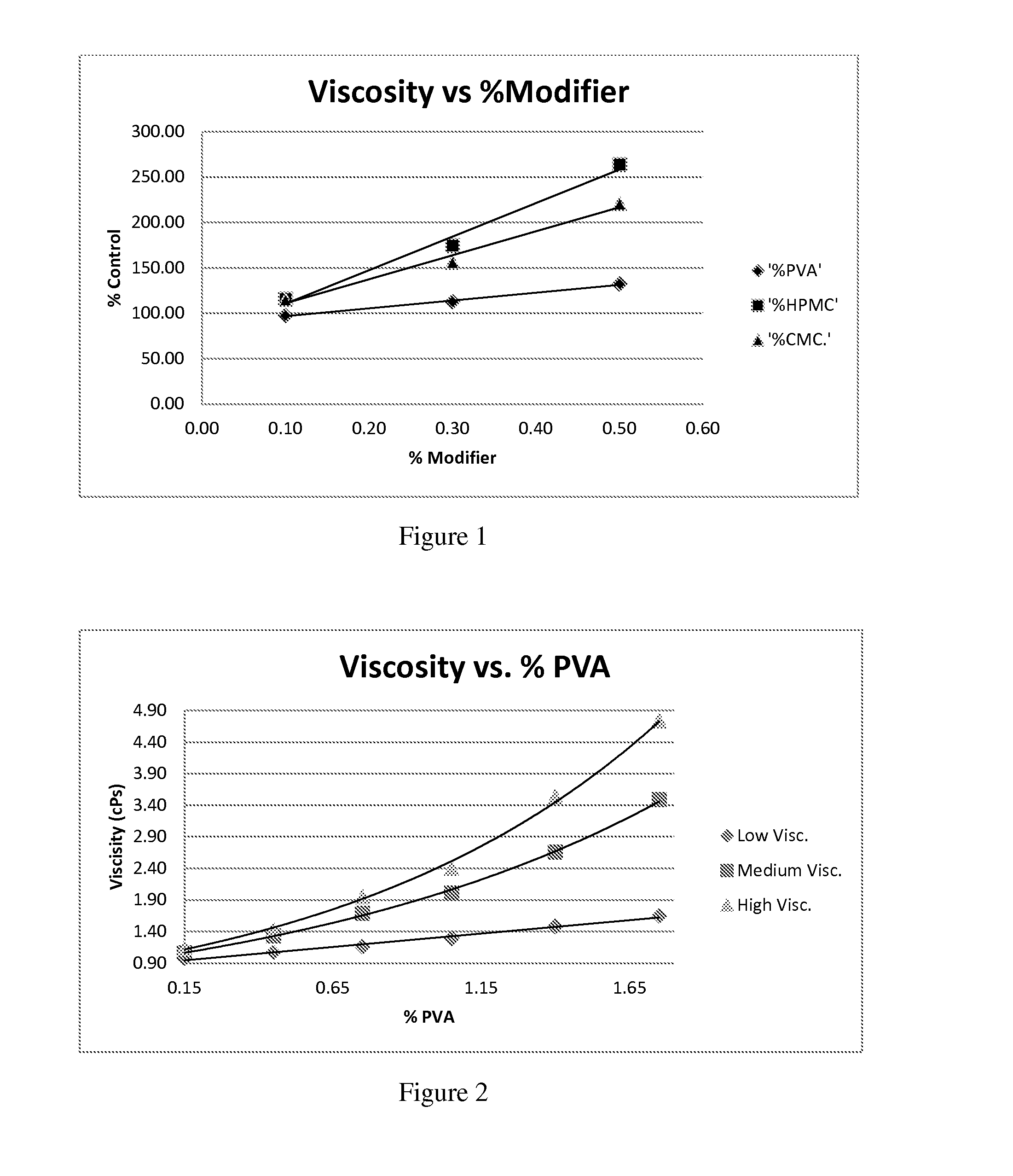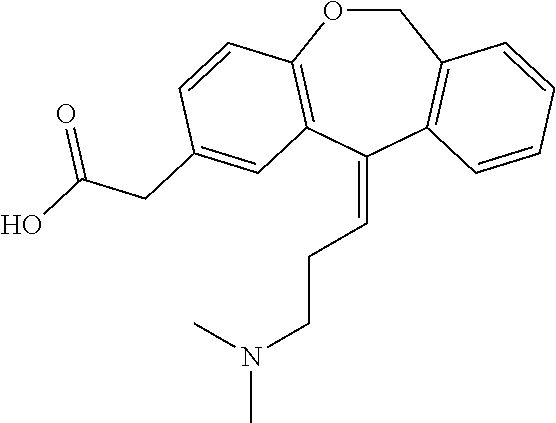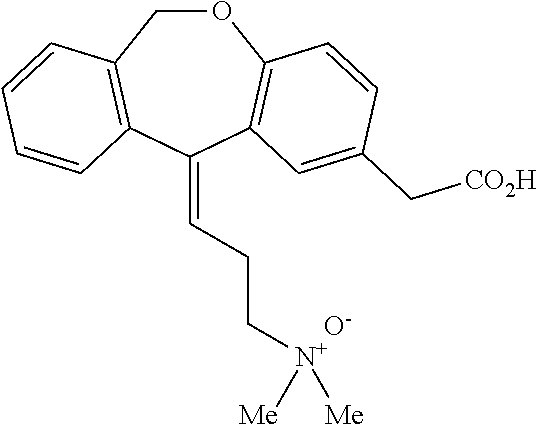Formulation of olopatadine
a technology of olopatadine and olopatadine, which is applied in the direction of medical preparations, pharmaceutical non-active ingredients, pharmaceutical delivery mechanisms, etc., can solve the problems of reducing the ability of the preservative to function as a preservative, reducing and avoiding the need for unacceptably low ph levels
- Summary
- Abstract
- Description
- Claims
- Application Information
AI Technical Summary
Benefits of technology
Problems solved by technology
Method used
Image
Examples
example 1
[0056]Commercial formulations of olopatadine were determined to have approximately 1.8 mg / mL Povidone K-30, 2.2 mg / mL olopatadine and a viscosity of about 1.35 cPs (1-2 cPs as per the U.S. Pat. No. 6,995,186). It has been established that povidone raw material may contain peroxides as trace contaminants from the polymerization reaction, which can lead to degradation of an active pharmaceutical ingredient that is sensitive to oxidation.
[0057]During these studies three different polymer modifiers were evaluated in order to determine whether povidone could be reduced or replaced. These modifiers were: Hydroxypropyl Methylcellulose, Carboxymethylcellulose, and Polyvinyl Alcohol. Hydroxypropyl Methylcellulose (HPMC) is a polymer used in ophthalmic solutions to increase drug solubility and increase viscosity. Carboxymethylcellulose (CMC) is a polymer used in ophthalmic solutions to increase viscosity. Polyvinyl Alcohol (PVA) is a water-soluble synthetic polymer that has been used in ophth...
PUM
| Property | Measurement | Unit |
|---|---|---|
| osmolality | aaaaa | aaaaa |
| osmolality | aaaaa | aaaaa |
| concentration | aaaaa | aaaaa |
Abstract
Description
Claims
Application Information
 Login to View More
Login to View More - R&D
- Intellectual Property
- Life Sciences
- Materials
- Tech Scout
- Unparalleled Data Quality
- Higher Quality Content
- 60% Fewer Hallucinations
Browse by: Latest US Patents, China's latest patents, Technical Efficacy Thesaurus, Application Domain, Technology Topic, Popular Technical Reports.
© 2025 PatSnap. All rights reserved.Legal|Privacy policy|Modern Slavery Act Transparency Statement|Sitemap|About US| Contact US: help@patsnap.com



